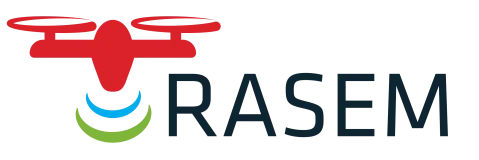Robot-assisted Environmental Monitoring for Air Quality Assessment in Industrial Scenarios (RASEM)


Impact
The distribution and exposure models can lead to improved technical control of air impurities, ventilation systems and better safety and protection policies, and consequently, the improvement of working conditions. In this scope, RASEM supports the transformation of the industry in terms of digitalization and data analytics, with the objective to improve the safety management in complex industrial scenarios.
Project goals
The RASEM project aims to:
- combine a dense network of low-cost sensors with a sparser network of more expensive sensors (stationary and mobile) in an efficient manner tailored to specific industrial environments
- develop approaches to combine static and mobile sensor nodes, e.g., mounted on structures or equipment in workroom or foundries), mounted on a robot or mounted on a robot that can make suggestions to the driver
- develop representations and algorithms to learn time- and event-dependent maps of dust, gas, and airflow distributions over prolonged periods of time based on in situ measurements
- develop sophisticated exposure models in industrial environments that will enable deeper insights into long-term exposure patterns
- develop methods for sensor planning to find optimal positions for stationary sensors during system deployment and to suggest preferable sensing locations to human drivers
- develop methods for human exposure estimation that exploit the dense sampling capabilities of the RASEM system and validate against simultaneous measurements by occupational hygienists
Ask about the project
Research group
Matti Leikas, Finnish Institute of Occupational Health
Mikko Poikkimäki, Finnish Institute of Occupational Health
Tuija Silonsaari, Finnish Institute of Occupational Health
Collaboration
Research partners include Bundesanstalt für Materialforschung und –prüfung (BAM) from Germany and Örebro University from Sweden. The project includes Finnish corporate partners.
Funding
RASEM-project is a part of Saf€ra 2018 joint call: New technologies, new trends and monitoring safety performance. The project is funded by Finnish Institute of Occupational Health, Finnish Work Environment Fund and Bundesanstalt für Materialforschung und –prüfung (BAM).
